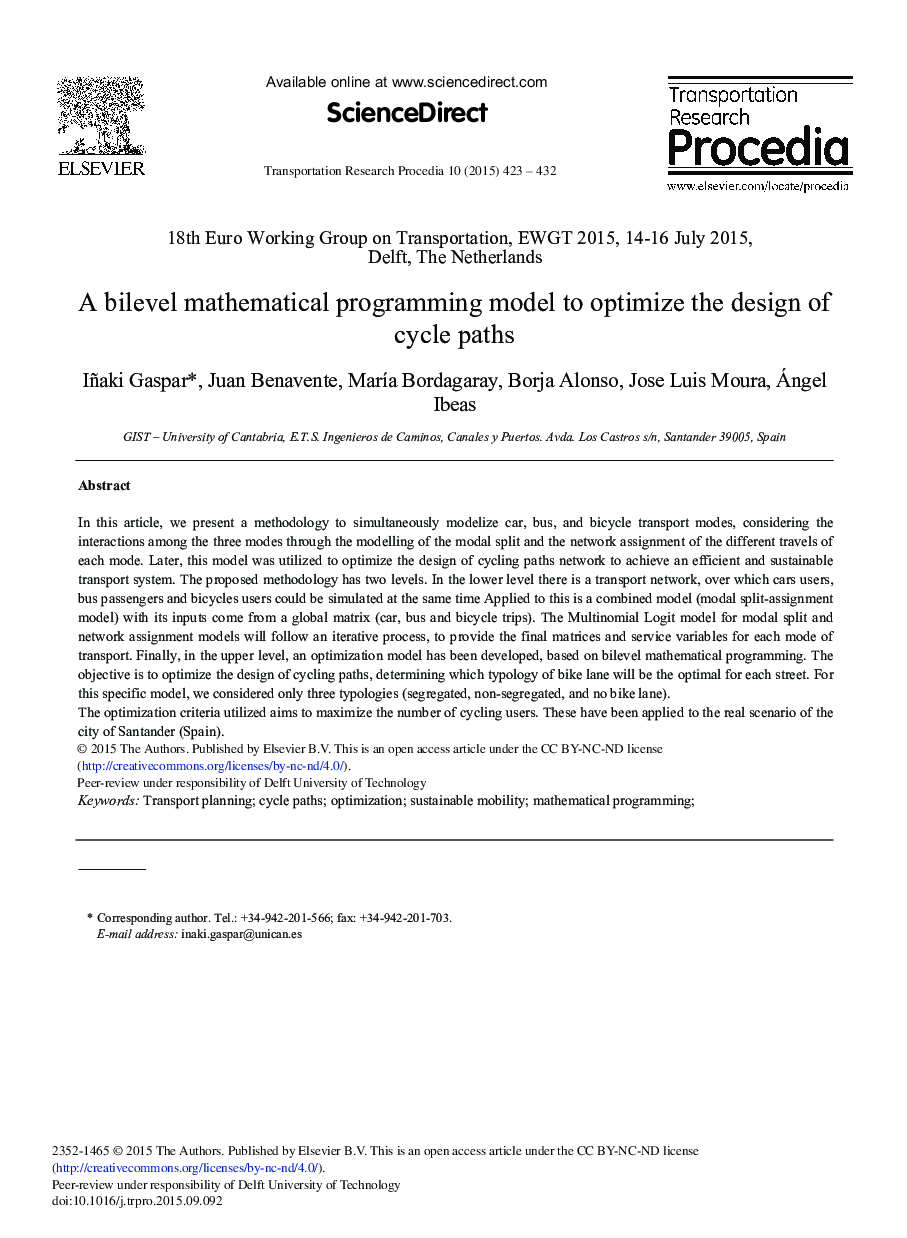| Article ID | Journal | Published Year | Pages | File Type |
|---|---|---|---|---|
| 1106852 | Transportation Research Procedia | 2015 | 10 Pages |
In this article, we present a methodology to simultaneously modelize car, bus, and bicycle transport modes, considering the interactions among the three modes through the modelling of the modal split and the network assignment of the different travels of each mode. Later, this model was utilized to optimize the design of cycling paths network to achieve an efficient and sustainable transport system. The proposed methodology has two levels. In the lower level there is a transport network, over which cars users, bus passengers and bicycles users could be simulated at the same time Applied to this is a combined model (modal split-assignment model) with its inputs come from a global matrix (car, bus and bicycle trips). The Multinomial Logit model for modal split and network assignment models will follow an iterative process, to provide the final matrices and service variables for each mode of transport. Finally, in the upper level, an optimization model has been developed, based on bilevel mathematical programming. The objective is to optimize the design of cycling paths, determining which typology of bike lane will be the optimal for each street. For this specific model, we considered only three typologies (segregated, non-segregated, and no bike lane).The optimization criteria utilized aims to maximize the number of cycling users. These have been applied to the real scenario of the city of Santander (Spain).
